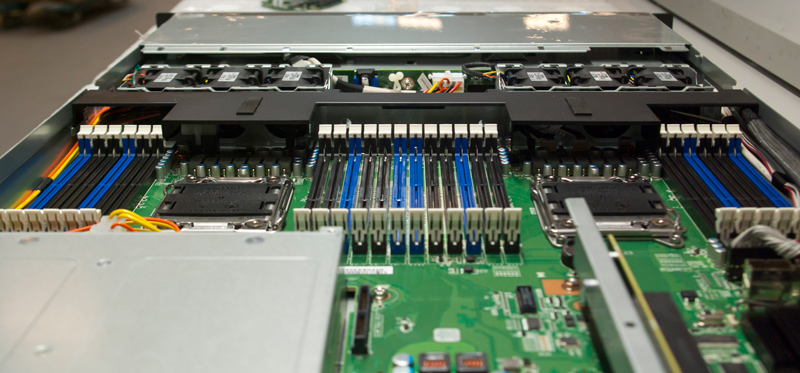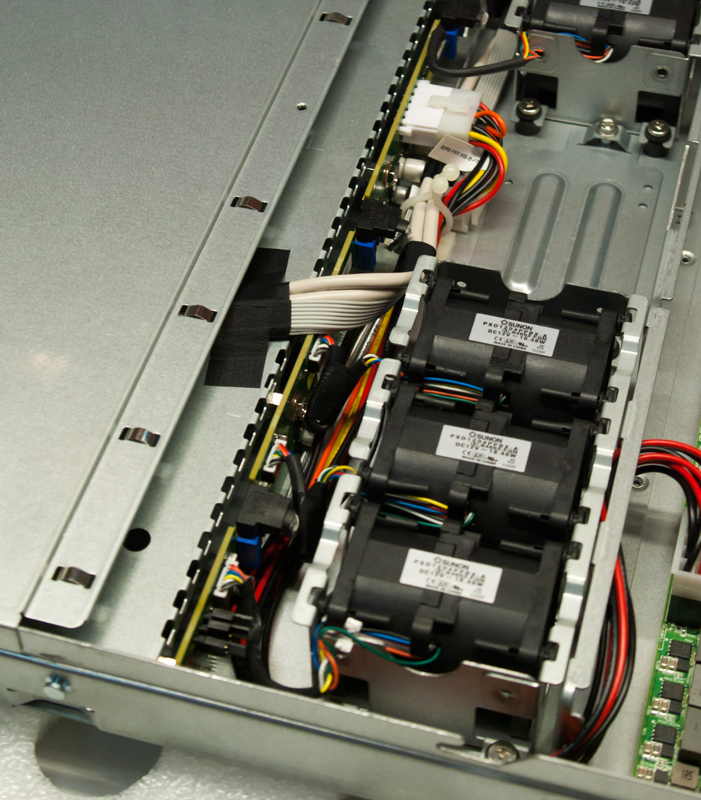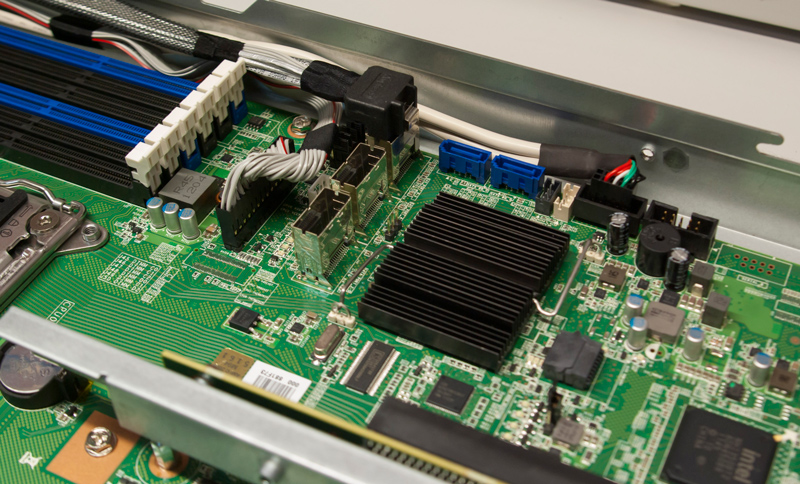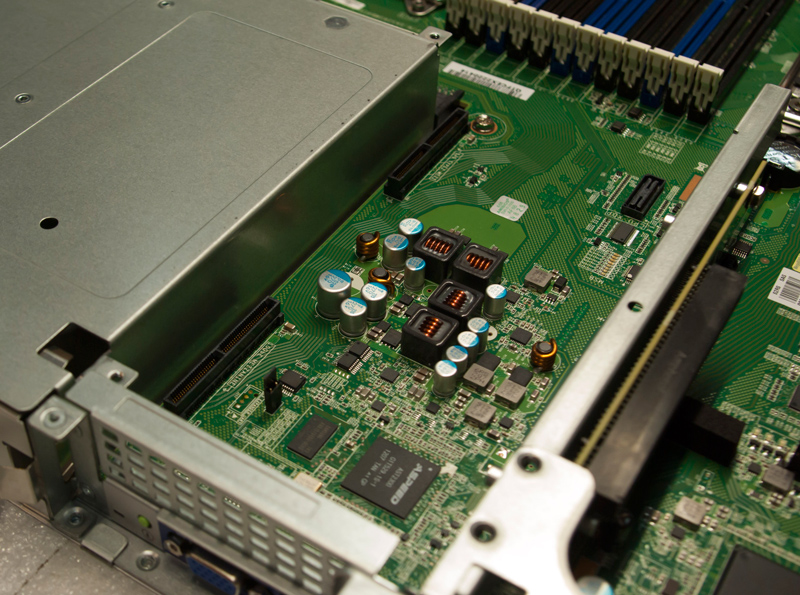ETegro Hyperion RS130 G4 SFF and Hyperion RS230 G4 SFF - more drives, more!
The topic of our article today will be the expansion of our line of ETegro Hyperion G4 servers due to the appearance of models with support for 2.5-inch drives (SFF designation). 
Small Form Factor, or SFF, depending on what the material is about, can apply to both small desktop enclosures and interface connectors. In our case, the latter have a place to be, but nevertheless, the main feature of the new ETegro Hyperion G4 server models is the significantly increased number of installed drives due to their transfer from a 3.5-inch to a 2.5-inch form factor. For those who use SSD, such servers are much more convenient, and high-speed hard drives are increasingly switching to the 2.5-inch form factor, so such servers have long been no longer something that only a very limited circle of users need.
The filling can be extremely diverse, it is traditionally easy to choose for yourself in our configurator , so before reviewing the servers, we briefly recall the main features of the basic configurations:
Well, now - the slides)) Let's start with the ETegro Hyperion RS130 G4 SFF.



The most radical difference is, of course, the front panel. Instead of the usual sled with a hot plug for 3.5-inch drives, arranged 4 in a row, in a 1U server there are five sleds for 2.5-inch drives located in 2 floors. In order not to go far, we’ll immediately look at 2U: in it, the entire front panel is occupied by a long row of 2.5-sleds, placed vertically. All the usual functionality in the form of a hot connection, convenient access and indication is in place.

The main "filling" of the platform has remained the same, as with ordinary models - two processors and 24 memory slots occupy most of the board. Pay attention to the air flow former - it would seem a trifle, but the temperature regime depends on its presence and shape even in the 1U case.



Immediately in front of the air casing are two blocks of three powerful twin fans in each. The fans are made easily removable and installed using special rubber studs. Between them sheltered a seat for the battery power cache of RAID-controllers - perhaps this is the only place in the housing where it can, in principle, be located.
Estimate the distance between the fans and the back of the disk basket - if we needed to conduct our wires (power and interface) to each disk, and not the common ones to the basket, we would just have nowhere to put them.




All the remaining space in the case is reserved for expansion cards, which in such cases are traditionally placed using a raiser - a special design that allows you to "rotate" the connectors and place the expansion cards parallel to the system board.
All kinds of controllers are located here, such as a service processor or an integrated RAID controller and a few surface mount elements. Particularly attentive can even see a special Intel service connector in the last photo. But in our opinion, the most interesting are two connectors for special expansion cards, which are located close to the power supply.





The design of these expansion cards is fully developed specifically for this series of servers. They are quite compact and are installed parallel to the motherboard and regardless of standard slots. That is why it was possible to increase the available functionality of the servers. Here are 3 possible expansion cards, from top to bottom: SAS RAID, SAS HBA and a network card with two 10G ports.



Power supplies have remained unchanged - we still use compact, quick-release models. A high degree of compactness is achieved by simplifying the design: not a bundle of wires, but only a special connector, leaves the unit on the board. Naturally, as part of the protection against failures, it is possible to install a second PSU with hot switching between them.
Well, now let's take a quick look at the differences between the 2U versions of the ETegro Hyperion RS230 G4 SFF. We have already seen the front panel, so immediately inside.




The vertical placement of the discs noticeably changes the front part: we have a new basket (still, the discs are not only different in form factor, but there are also twice as many of them). Following them are again thick fans, though now single, but of a larger diameter and occupying the entire width. The plastic air casing increased in size and "sheltered" a seat for itself under the battery of the RAID controller.


The height of the case has increased, which means we have more options for installing expansion cards. In 2U, they can be installed up to 5 full-weight pieces with a raiser, plus miniature daughter cards have not gone anywhere.

A free space appeared above the power supplies - and we decided that it was worthless for him to remain empty. Therefore, in it we placed another small basket on two disks (with a slide and a hot plug - everything is as it should). Someone wants to place system disks here, someone - caching SSDs - everything is in your hands.
If something remains unclear or you want to know more about something - do not be shy, write.

Small Form Factor, or SFF, depending on what the material is about, can apply to both small desktop enclosures and interface connectors. In our case, the latter have a place to be, but nevertheless, the main feature of the new ETegro Hyperion G4 server models is the significantly increased number of installed drives due to their transfer from a 3.5-inch to a 2.5-inch form factor. For those who use SSD, such servers are much more convenient, and high-speed hard drives are increasingly switching to the 2.5-inch form factor, so such servers have long been no longer something that only a very limited circle of users need.
The filling can be extremely diverse, it is traditionally easy to choose for yourself in our configurator , so before reviewing the servers, we briefly recall the main features of the basic configurations:
- Intel C602 Chipset
- up to 2 Intel Xeon processors E5-26xx
- 24 slots supporting up to 768 GB eight-channel DDR3
- Network: 2 Intel Gigabit Ethernet I350BT2
- 1 (5 at RS230 G4 SFF) PCI-Express 3.0 x16 slot
- Intel SAS RAID controller is offered as a daughterboard with installation directly on the motherboard, while we save standard PCI-E slots, or in the standard version of the expansion card
- An important feature of these platforms is support for up to 2 daughter expansion cards from the set: SAS RAID LSI controller with 512MB memory, SAS HBA controller or dual-port SFP + 10Gb Ethernet adapter. They, in particular, significantly expand the flexibility of the younger model (RS 130 G4). In the configurator are designated as mezz card
- Monitoring and control implemented through BMC processor and KVM over IP function
- 10 bays for installing hot-swappable hard drives with front access (24 bays + 2 places for 2.5 "hot-swappable drives on the back of the chassis for RS230)
- 750 W (1100 W) chassis with a duplicated power supply unit with hot swapping; Intel Node Management Support
Well, now - the slides)) Let's start with the ETegro Hyperion RS130 G4 SFF.



The most radical difference is, of course, the front panel. Instead of the usual sled with a hot plug for 3.5-inch drives, arranged 4 in a row, in a 1U server there are five sleds for 2.5-inch drives located in 2 floors. In order not to go far, we’ll immediately look at 2U: in it, the entire front panel is occupied by a long row of 2.5-sleds, placed vertically. All the usual functionality in the form of a hot connection, convenient access and indication is in place.

The main "filling" of the platform has remained the same, as with ordinary models - two processors and 24 memory slots occupy most of the board. Pay attention to the air flow former - it would seem a trifle, but the temperature regime depends on its presence and shape even in the 1U case.



Immediately in front of the air casing are two blocks of three powerful twin fans in each. The fans are made easily removable and installed using special rubber studs. Between them sheltered a seat for the battery power cache of RAID-controllers - perhaps this is the only place in the housing where it can, in principle, be located.
Estimate the distance between the fans and the back of the disk basket - if we needed to conduct our wires (power and interface) to each disk, and not the common ones to the basket, we would just have nowhere to put them.




All the remaining space in the case is reserved for expansion cards, which in such cases are traditionally placed using a raiser - a special design that allows you to "rotate" the connectors and place the expansion cards parallel to the system board.
All kinds of controllers are located here, such as a service processor or an integrated RAID controller and a few surface mount elements. Particularly attentive can even see a special Intel service connector in the last photo. But in our opinion, the most interesting are two connectors for special expansion cards, which are located close to the power supply.





The design of these expansion cards is fully developed specifically for this series of servers. They are quite compact and are installed parallel to the motherboard and regardless of standard slots. That is why it was possible to increase the available functionality of the servers. Here are 3 possible expansion cards, from top to bottom: SAS RAID, SAS HBA and a network card with two 10G ports.



Power supplies have remained unchanged - we still use compact, quick-release models. A high degree of compactness is achieved by simplifying the design: not a bundle of wires, but only a special connector, leaves the unit on the board. Naturally, as part of the protection against failures, it is possible to install a second PSU with hot switching between them.
Well, now let's take a quick look at the differences between the 2U versions of the ETegro Hyperion RS230 G4 SFF. We have already seen the front panel, so immediately inside.




The vertical placement of the discs noticeably changes the front part: we have a new basket (still, the discs are not only different in form factor, but there are also twice as many of them). Following them are again thick fans, though now single, but of a larger diameter and occupying the entire width. The plastic air casing increased in size and "sheltered" a seat for itself under the battery of the RAID controller.


The height of the case has increased, which means we have more options for installing expansion cards. In 2U, they can be installed up to 5 full-weight pieces with a raiser, plus miniature daughter cards have not gone anywhere.

A free space appeared above the power supplies - and we decided that it was worthless for him to remain empty. Therefore, in it we placed another small basket on two disks (with a slide and a hot plug - everything is as it should). Someone wants to place system disks here, someone - caching SSDs - everything is in your hands.
If something remains unclear or you want to know more about something - do not be shy, write.
